The Serie A was back in action with Spezia hosting Fiorentina at the Dino Manuzzi. Spezia and Fiorentina had never played an official Serie A before this, and the home side were keen to put on their best game against the Serie A regulars. Both teams had had an inconsistent start to their campaigns – both had won just one game out of their opening five fixtures. It was therefore imperative for both the teams to get their seasons back on track after the international break. However, the game wouldn’t add much to their matches won, as the game finished a 2-2 draw.
For Spezia, after the 3-0 defeat against Milan before the break, the draw would count as a good result given they came back from two down. For Fiorentina, they must only wonder how far they can get if they are to keep dropping points like this. This tactical analysis brings to light the tactics and plays that both the teams applied in the game. The analysis aims to highlight some of the events that unfolded in the game, which led to the scoreline.
Lineups
Vincenzo Italiano set his newly promoted Spezia side up in 4-3-3 tactics. Ivan Provedel started in goal with a back four of Jacopo Sala, Claudio Terzi, Julian Chabot and Simone Bastoni. Alessandro Deiola, Matteo Ricci and Gennaro Acampora took their place in the midfield. The frontline consisted of Daniele Verde, Roberto Piccoli and Emanuel Gyasi.
Giuseppe Iachini set up his Fiorentina side in 3-5-2 tactics, to visit Spezia. Bartłomiej Drągowski started in goal, with a back three of Nikola Milenković, Germán Pezzella and ex Juventus man Martín Cáceres. The midfield had a trio of Giacomo Bonaventura, Darryl Amrabat and Gaetano Castrovilli; with Pol Lirola and Cristiano Biraghi playing as the wing-backs. Franck Ribéry and Dušan Vlahović played up front in the attack.
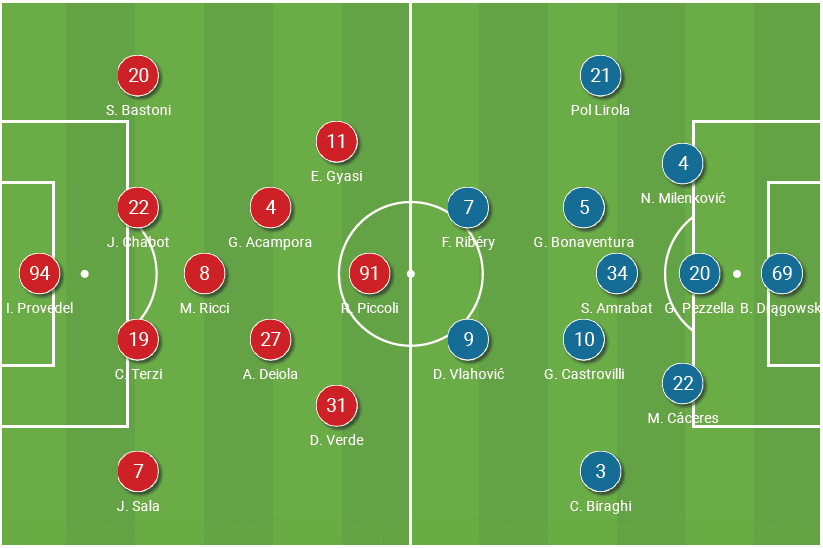
Fiorentina’s wide play from the get go
Fiorentina, by playing in 3-5-2 tactics, had an obvious number advantage in the midfield. Their midfield of five was up against Spezia’s midfield of three (since Spezia played in 4-3-3 tactics). This also obviously translates into greater width for Fiorentina to play with, as opposed to Spezia’s narrow setup. This section of the tactical analysis looks at how it was this very shape which led to the opening goal inside just three minutes of play.
Given Fiorentina’s shape advantage over Spezia, Iachini sent his team in with the objective of making use of the wide advantage. Even before Spezia could adjust their positions to counter the Fiorentina formations, Fiorentina forced their way into the Spezia defence. Apart from the wide positions taken up Fiorentina as part of their tactics, what they also managed to beautifully execute was that they boxed in a total of six Spezia players inside their formation. Below are the images to support this analysis.
The first image is of Fiorentina’s line of back three.
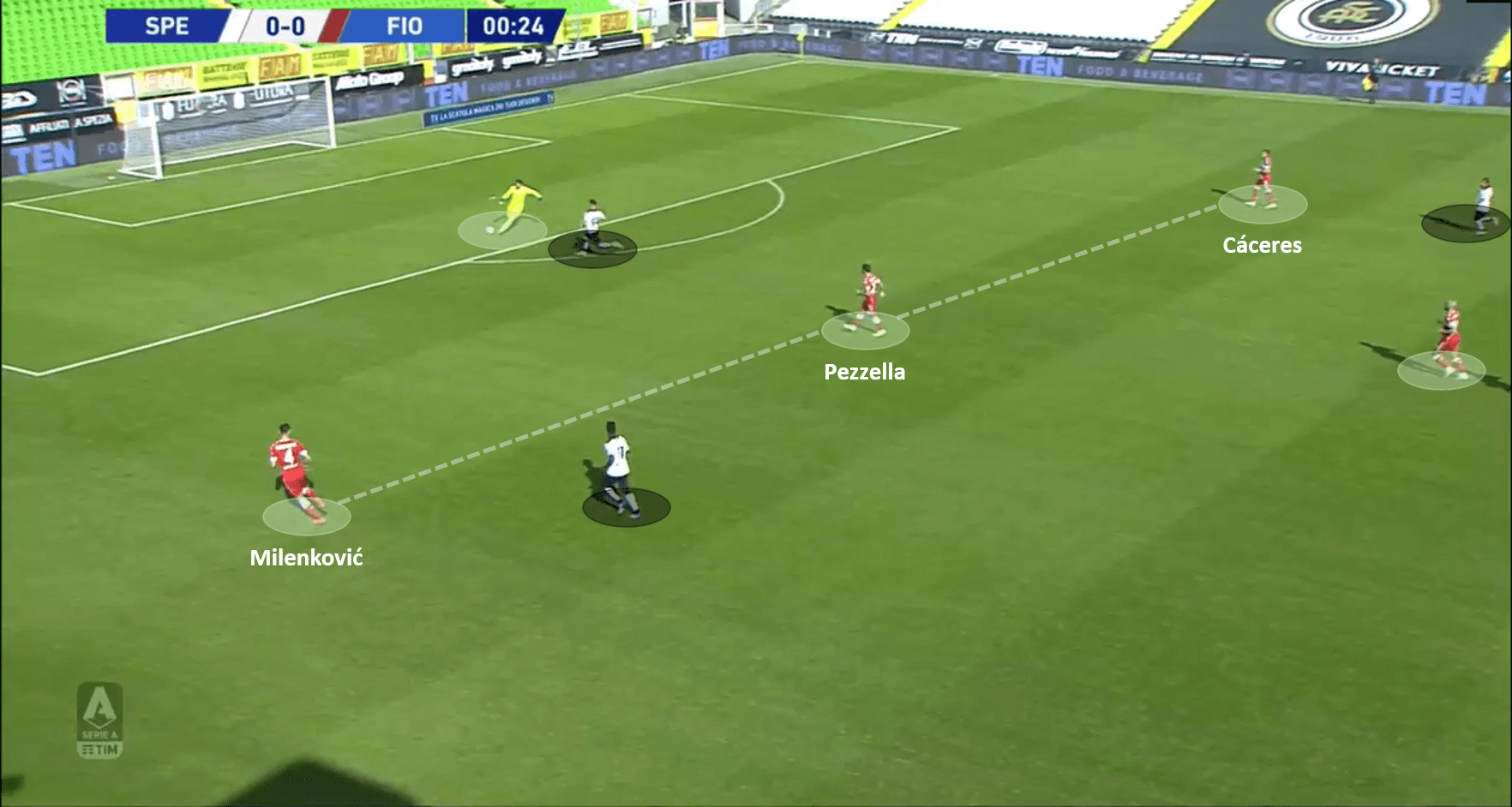
The next image is of how Fiorentina’s tactics and quick positional sense allowed them to box in the Spezia players and choke them for space.
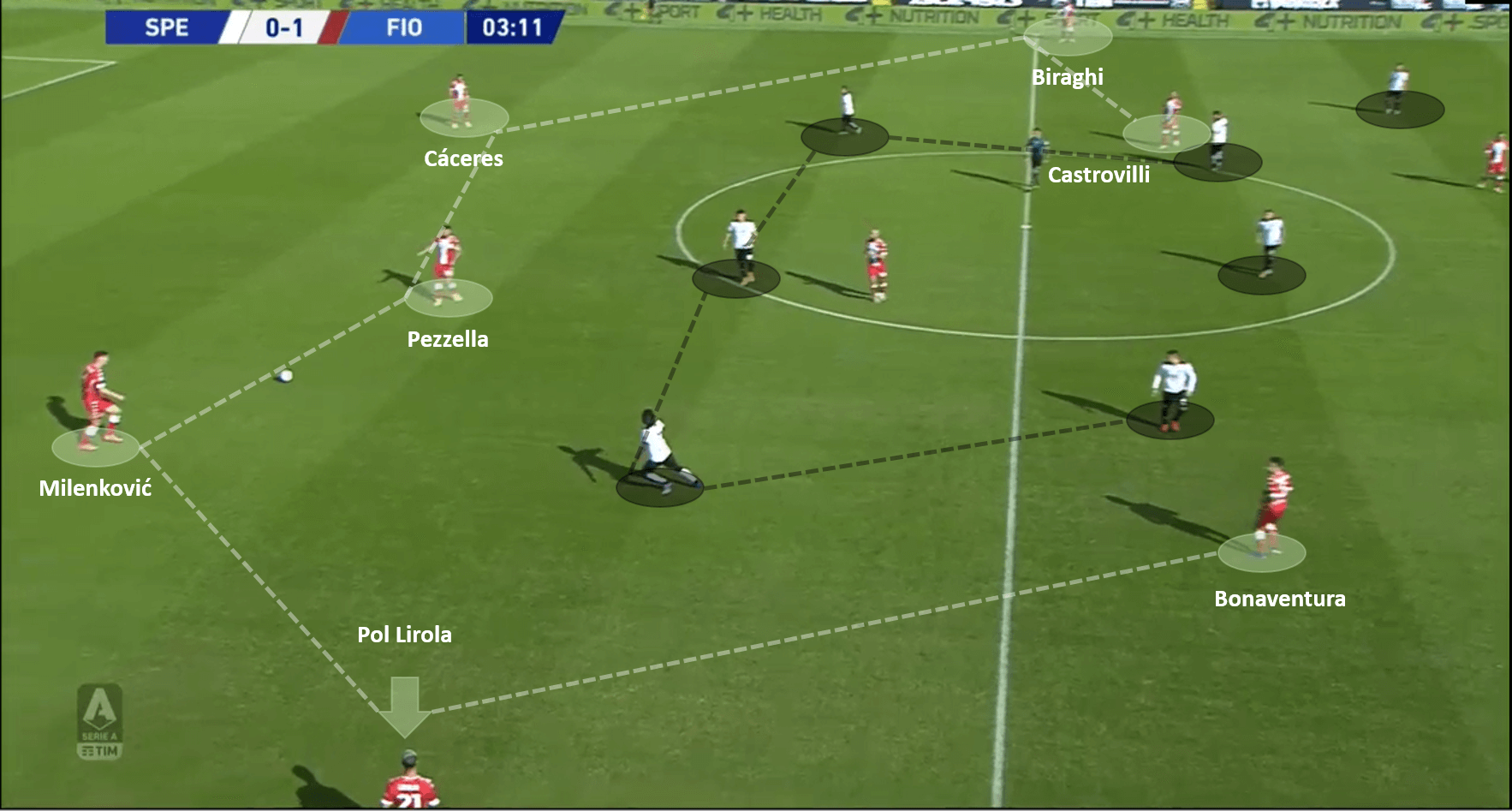
In the above image, it is clear how Fiorentina quickly capitalised on their shape advantage and choked Spezia for space in the opening minutes. However, what’s important is to note that by doing this they not only choked Spezia for space in the middle, but they also opened up space for themselves on the wings. This in fact was a key factor in their second goal of the game.
Pol Lirola picked up the ball on the right flank, and passed it towards Ribéry, who played it back into the path of the underlapping Pol Lirola. He sped into the opposition box without breaking a sweat and put in a neat cross for Biraghi – who put it into the net. The below images support the analysis by depicting how Fiorentina’s tactics came to life.
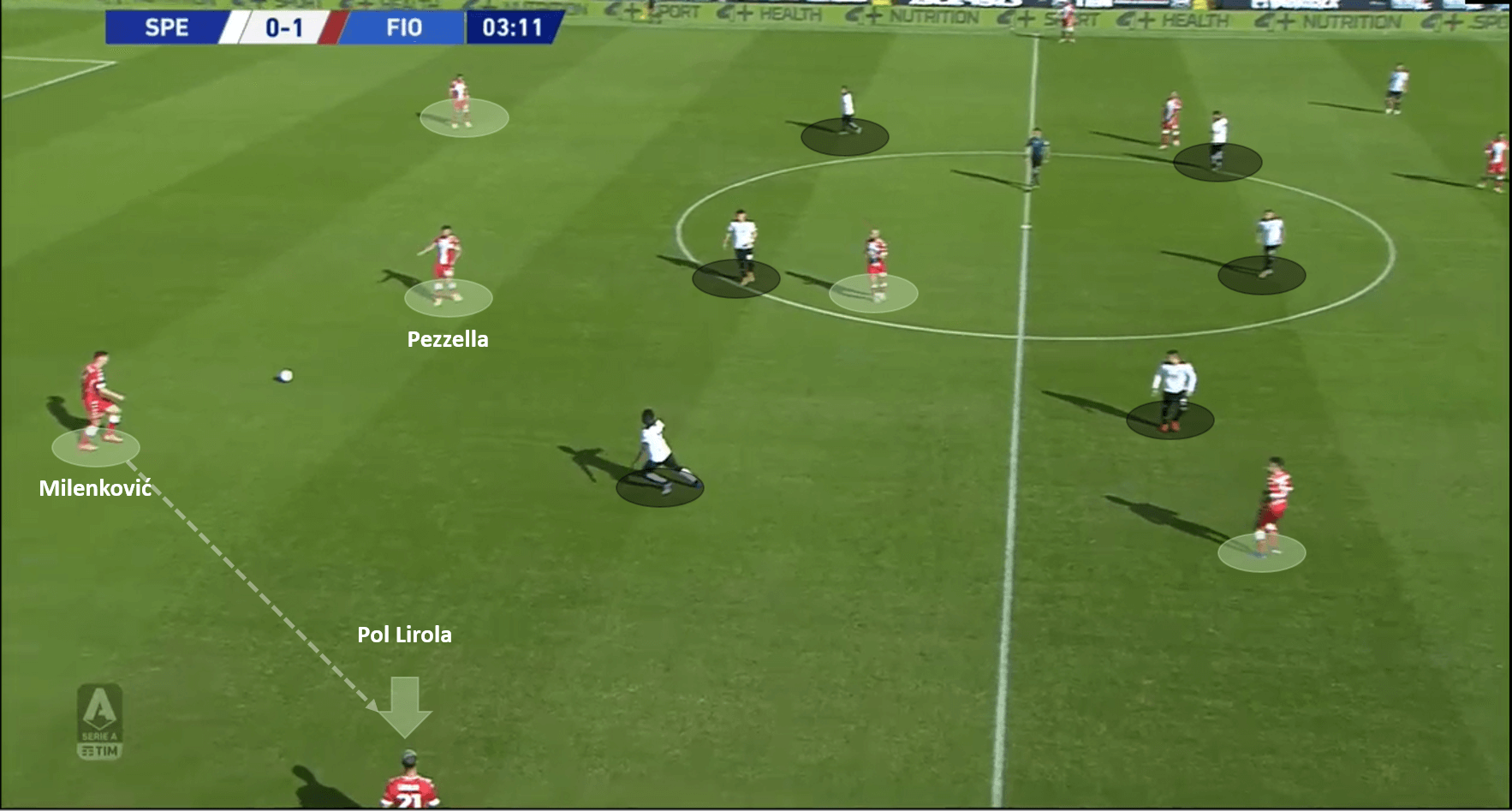
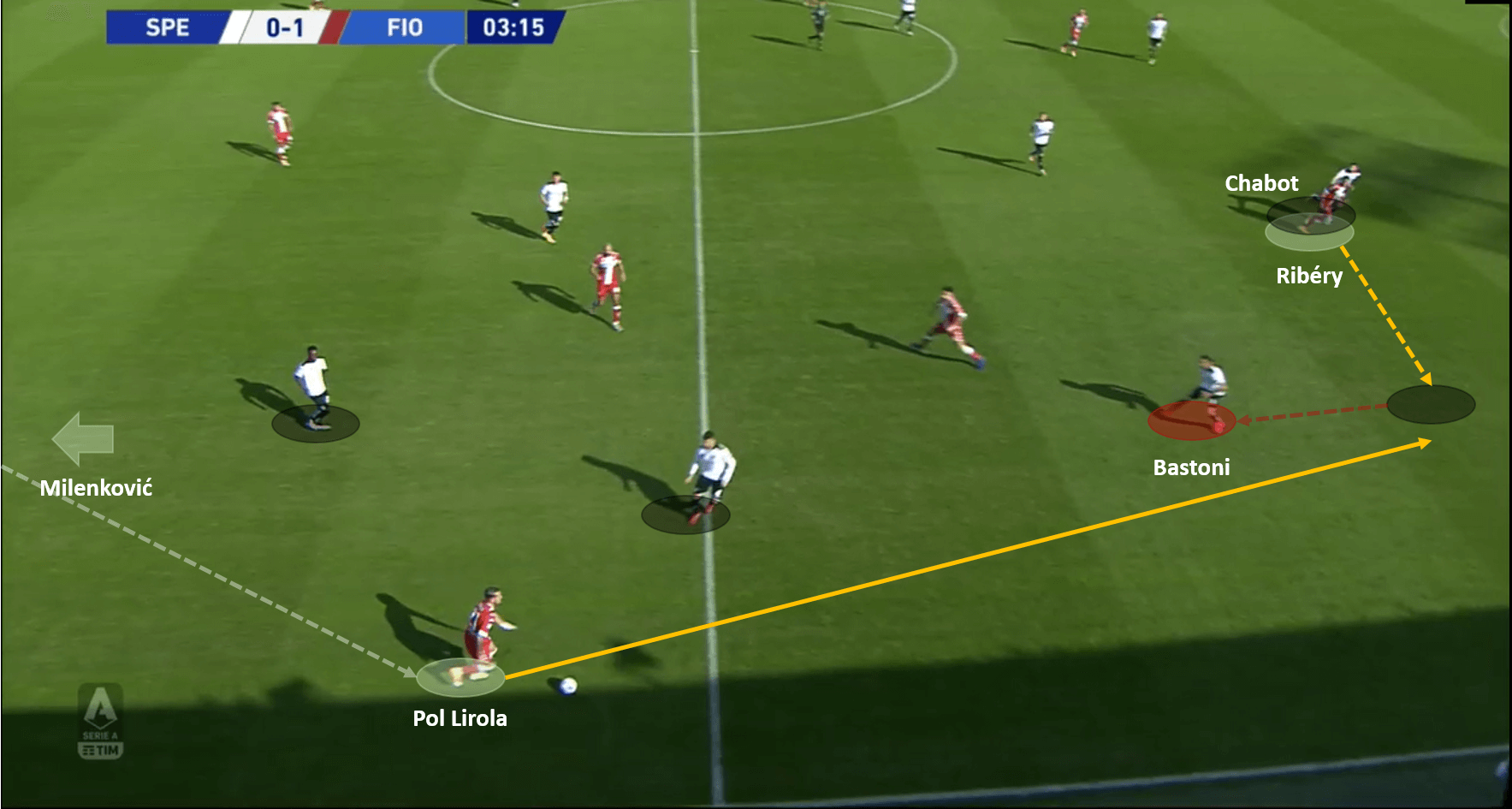

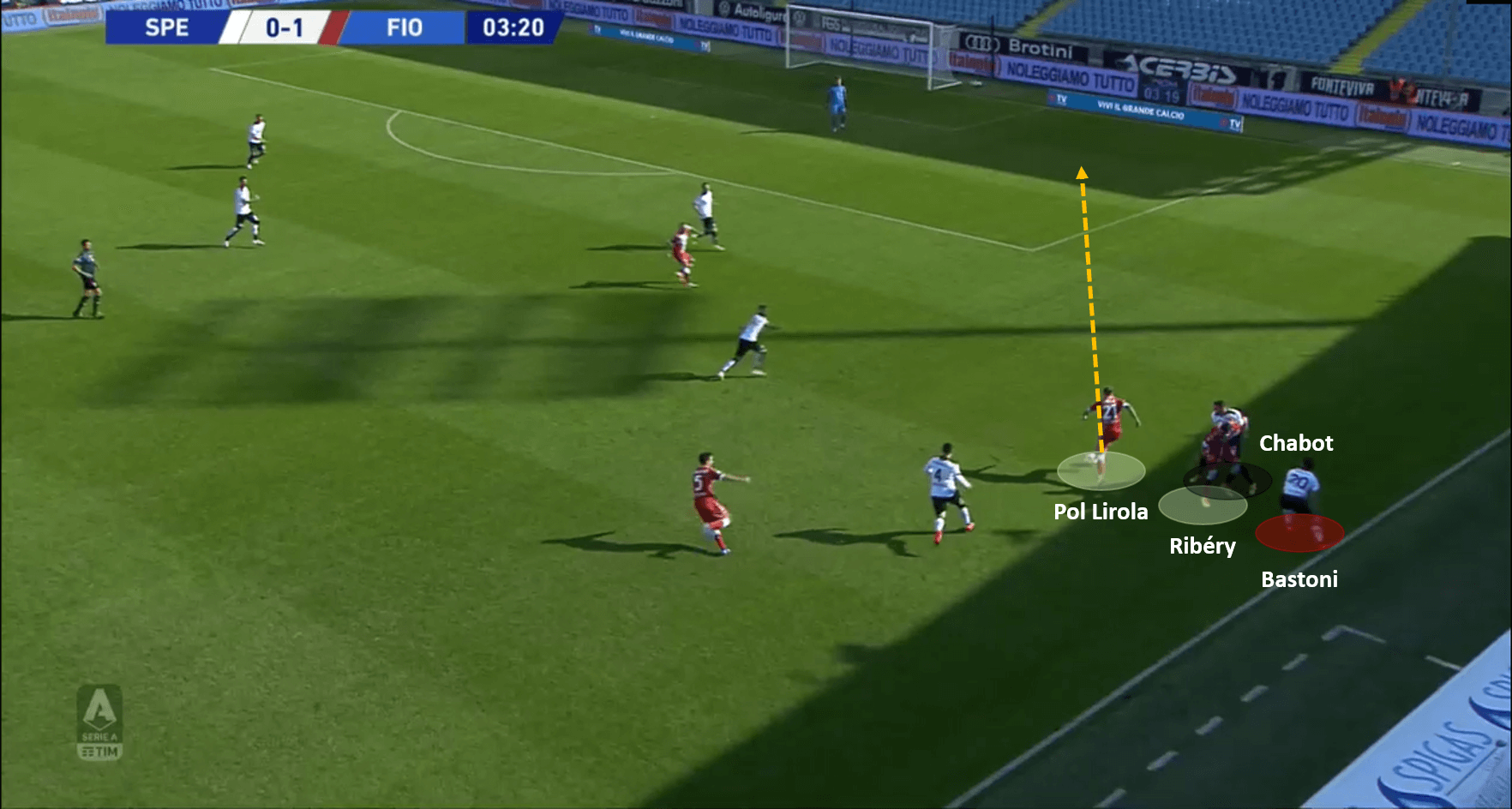
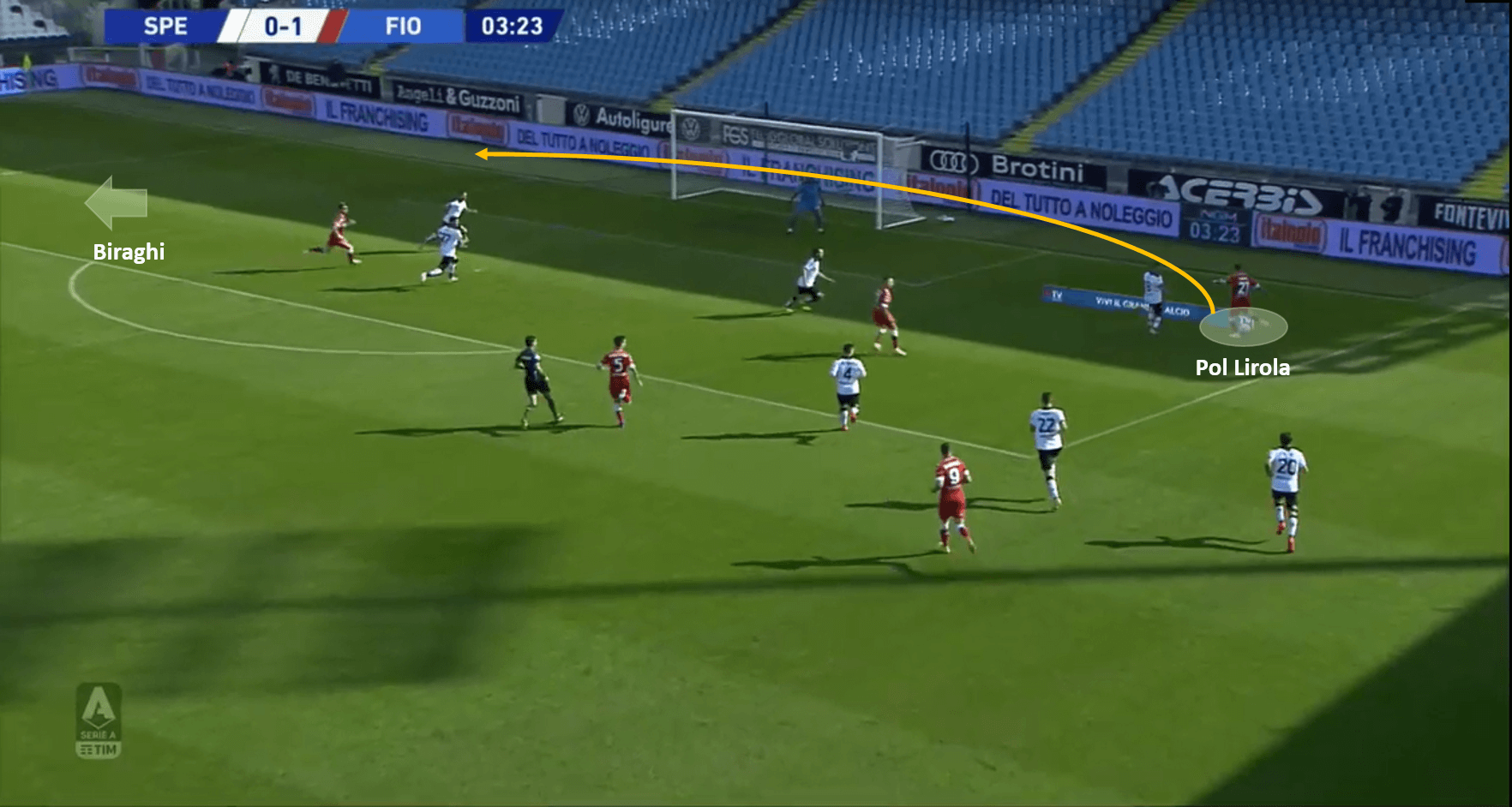
The analysis shows that this wasn’t the only occasion where Fiorentina’s shape tactics and good positional sense helped them take advantage of Spezia. But it certainly was the most fruitful instance as it led to their second goal of the game.
Pressing
This section of the tactical analysis takes a look at how both of Fiorentina’s goals conceded/ both of Spezia’s goals scored coincided with the fall/rise in press of the respective teams. In addition to this, it also takes a look at how the two teams positioned similarly yet different from each other. The analysis shows that Spezia had a game average PPDA of 10.8 while Fiorentina had a PPDA of 10.7. PPDA stands for passes allowed per defensive action; it means that Spezia allowed 10.8 passes to be played before they took a defensive action, while Fiorentina allowed 10.7 passes before taking a defensive action. To set context to those numbers, the league average for season 2019/20 was 10.92. While this tells us there wasn’t much difference in their pressing intensities, it cannot be a mere coincidence that both of Spezia’s goals came when Fiorentina had dropped their press and sat deeper. Below is a chart displaying the PPDA for both teams during different intervals of time.
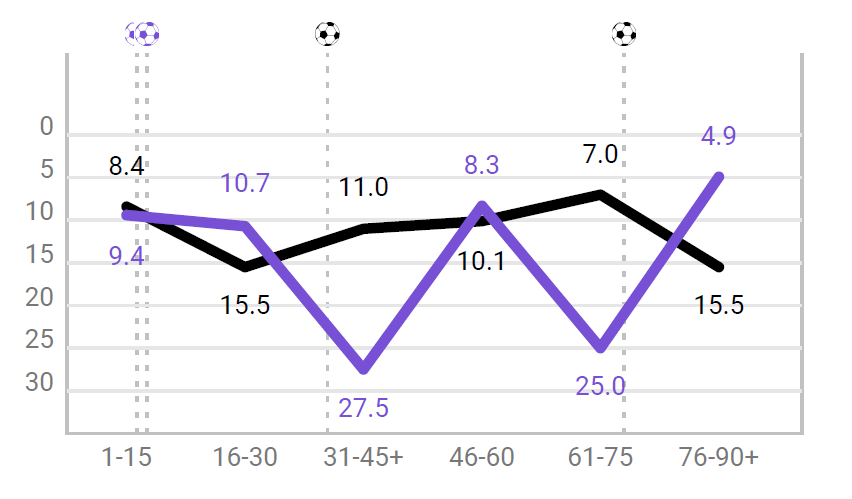
As the analysis shows, both the goals Spezia scored were when Fiorentina had dropped their pressing intensity. This, while Spezia kept up with their press. Even from the way the teams were set up in terms of tactics, the average positions of the defensive line and the line of engagement varied, mirroring the press differences. The below images support the analysis.
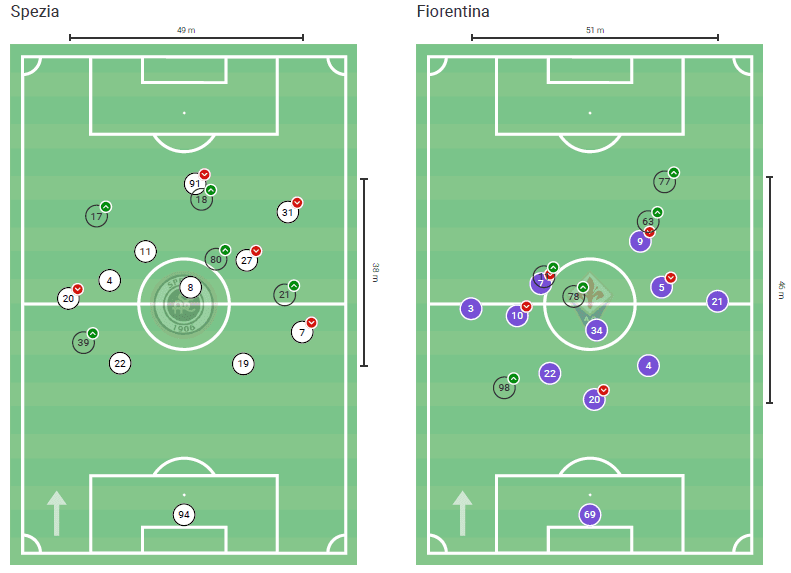
The images indicate how Fiorentina sat deeper in their half, while Spezia played with a higher defensive line. Even the line of engagement held by both teams differed, with Spezia again playing a high line and Fiorentina choosing to play it relatively conservative. The images further support the analysis of both the teams’ intended in-game tactics.
Below are some images from the game, which show the positions of both sets of defensive lines, which depict the pressing tactics.
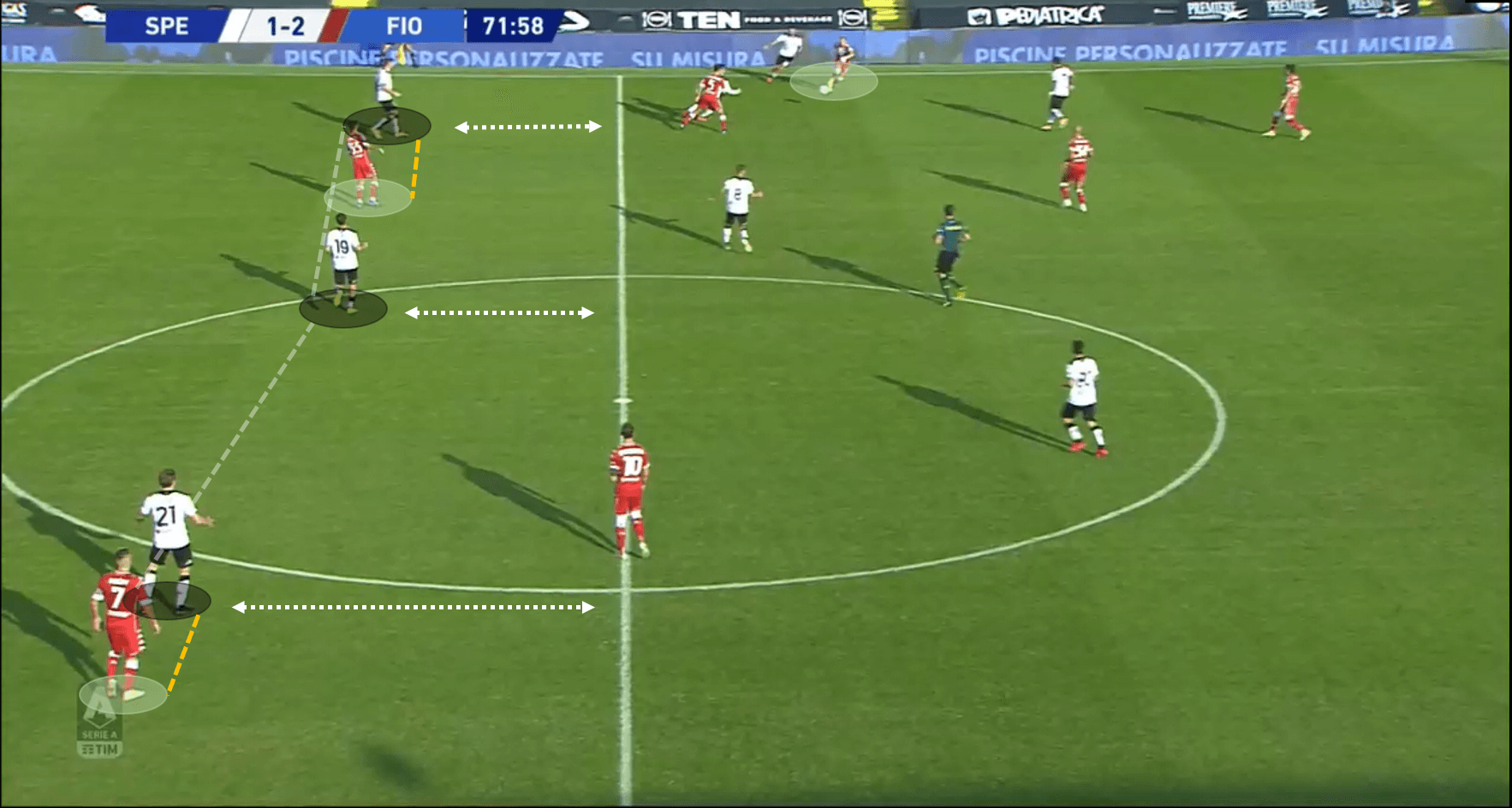
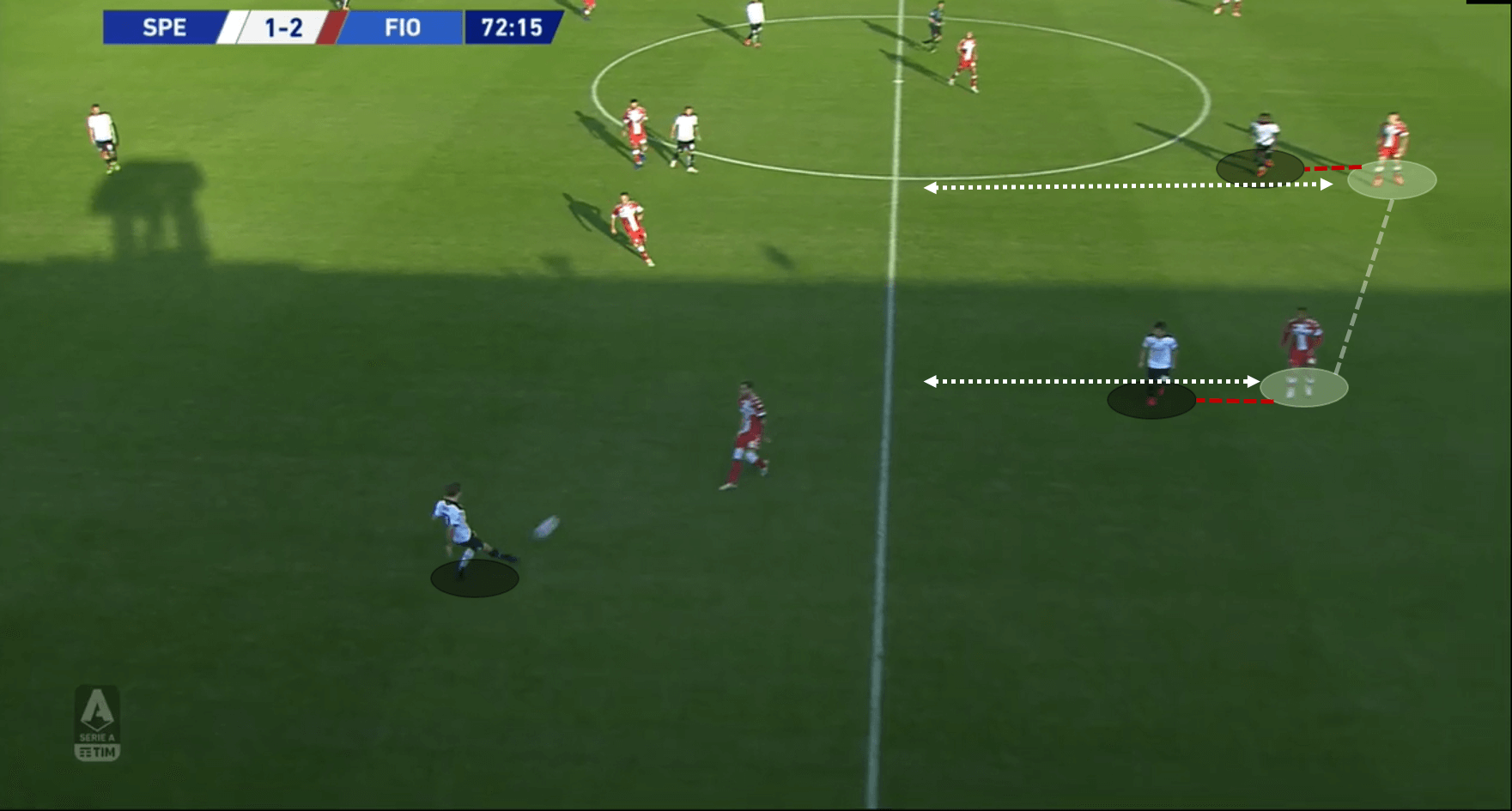
Costly mistakes
This section of the tactical analysis takes a look at how positioning and movement mistakes paved the way for all of the goals scored in the game, arguably. While the mistakes may not have been the sole reason for the goals being scored, they definitely did play a part in the build-up. In the first section of the tactical analysis, we saw how Fiorentina took advantage of their shape and capitalised on a movement error by Bastoni which cost Spezia a goal. In this section, we do an analysis of two other goals in the game which both came due to individual errors – one a movement and positioning error, and the other a poor lapse in concentration.
The first goal for this analysis is Fiorentina’s first in the game that came in the early minutes of the game. Biraghi took a good corner and put the ball near the penalty spot. The Spezia players seemed to have marked all of the Fiorentina shirts in the box, including Pezzella who was marked by Deiola. However, what followed was poor movement and decision making which left Pezzella unmarked in front of goal. Pezzella put an open header into the net. The below images support the analysis.
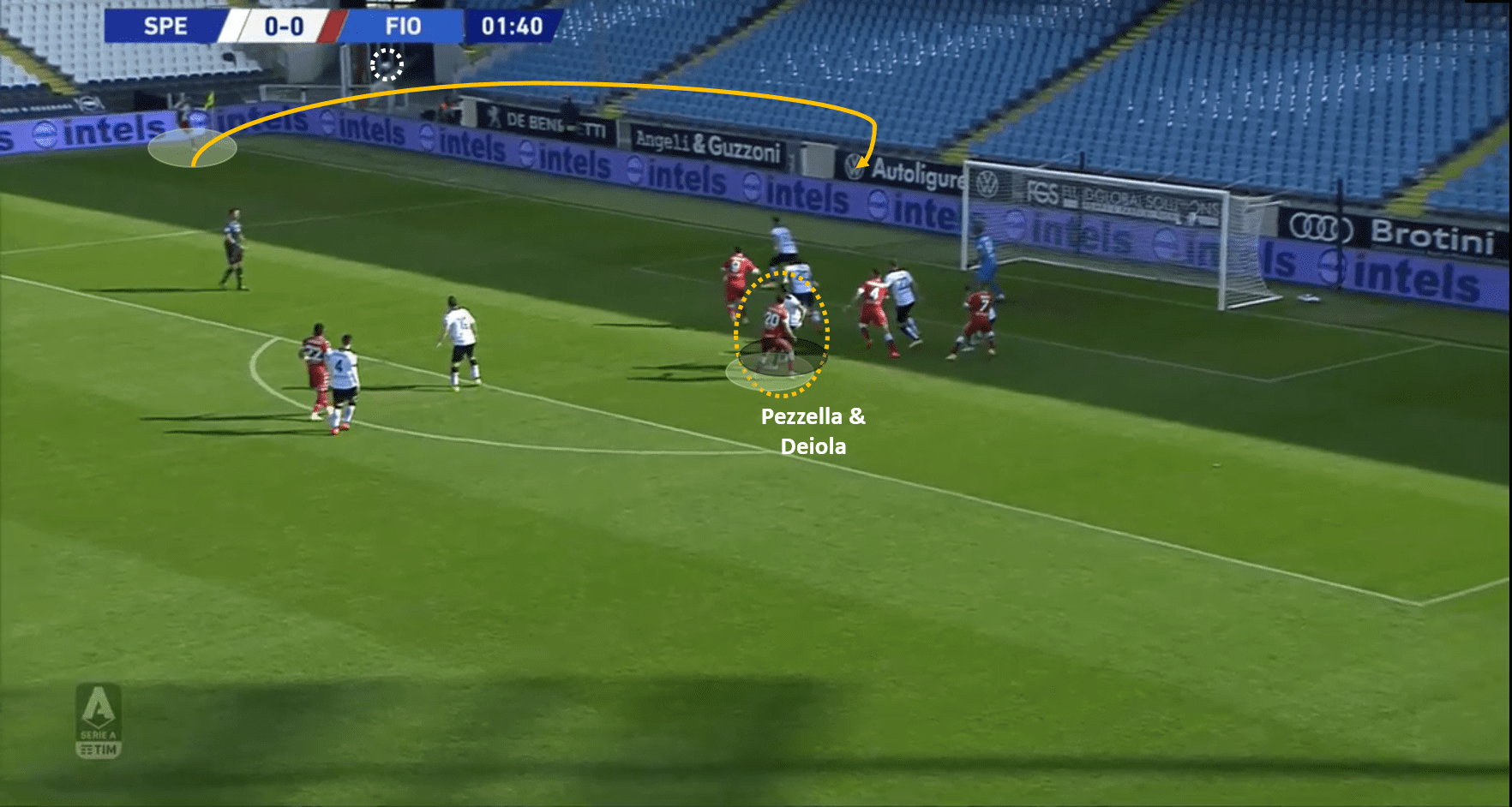
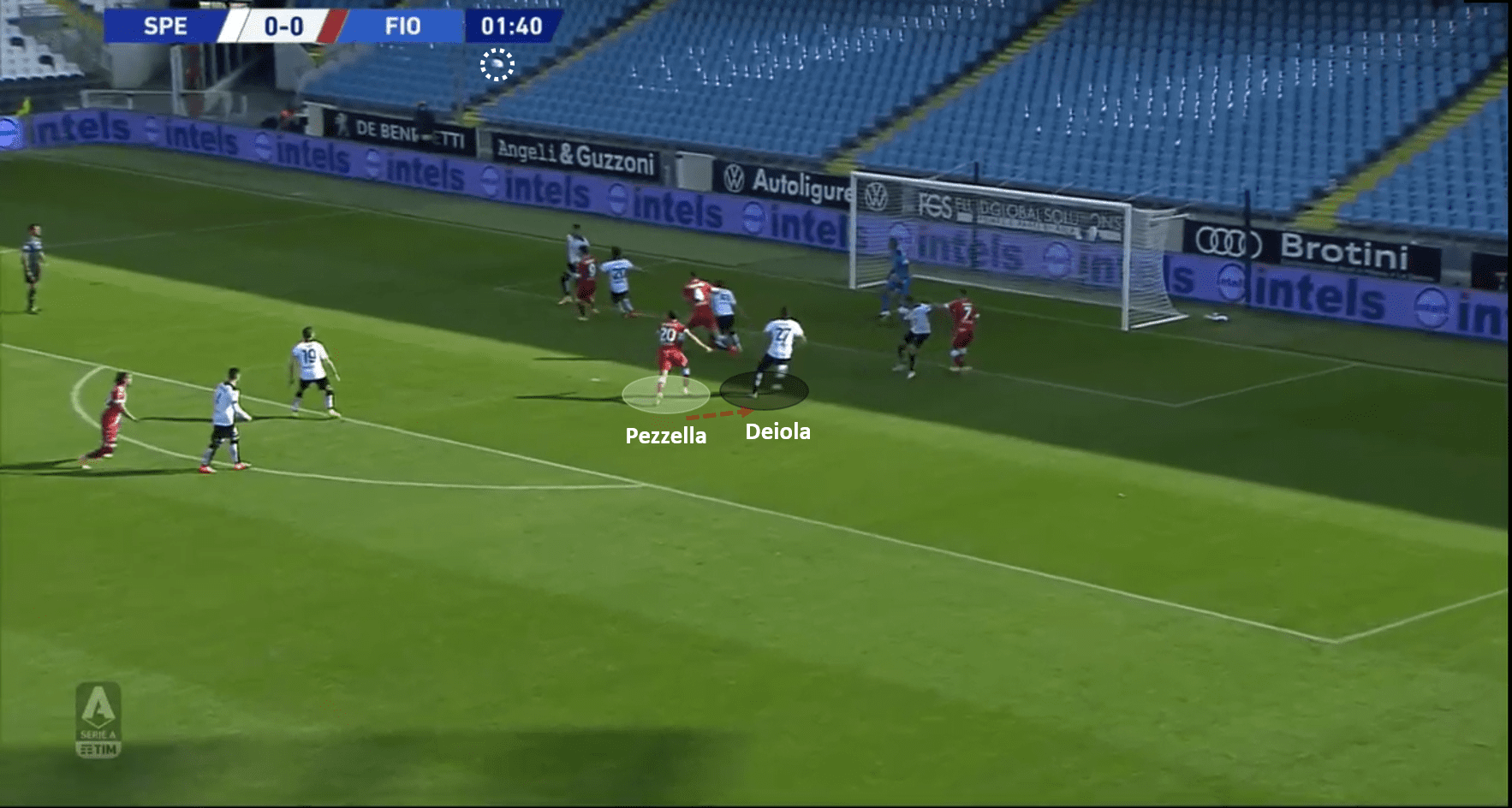
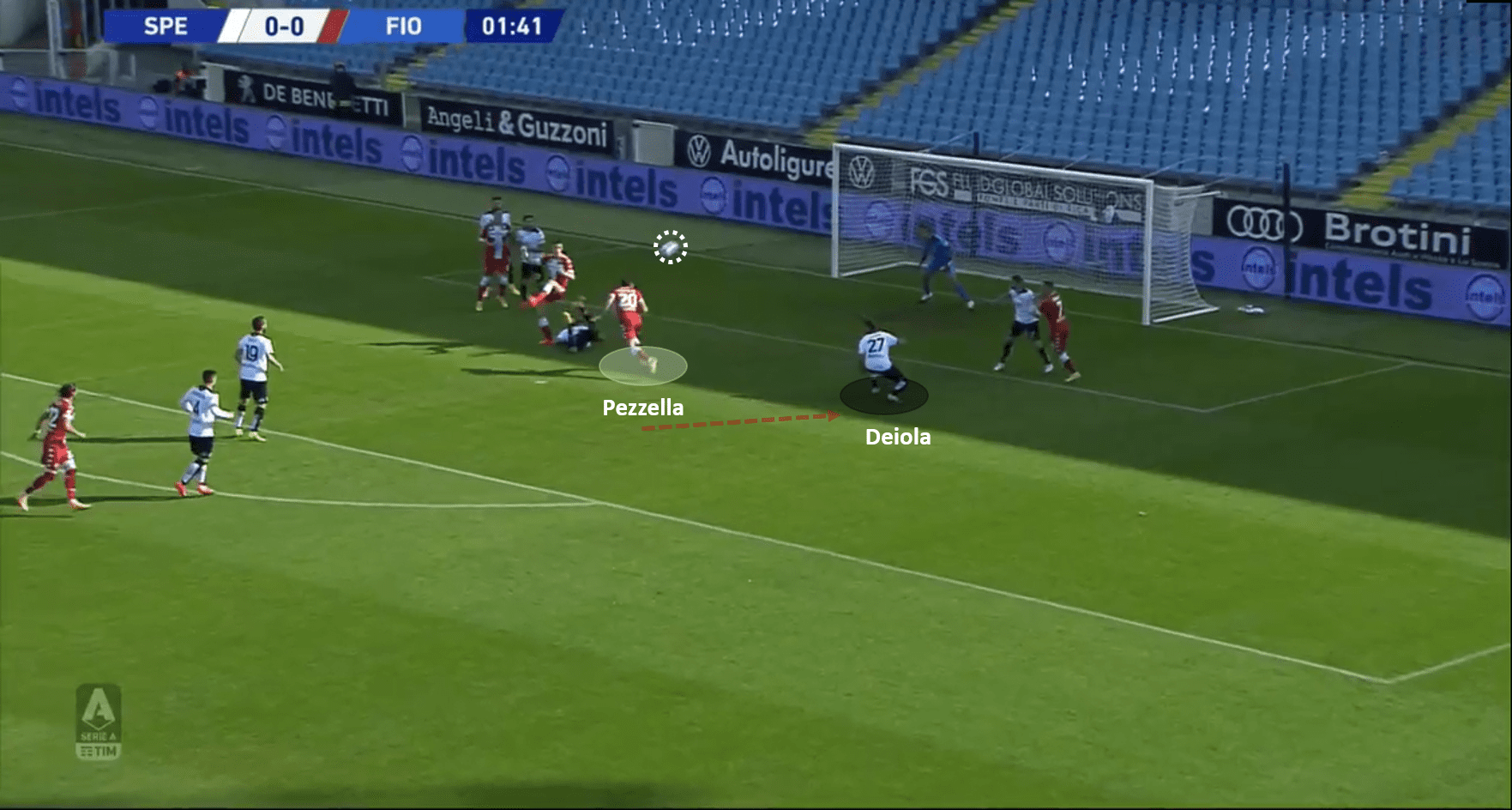
The next incident in this analysis is from Spezia’s first goal of the game. This goal saw good vision and movement from the Spezia duo of Terzi and Verde. However, what was more on display was the lapse in concentration by Cáceres. Terzi spotted Verde’s run behind Cáceres, and thought of playing a through ball around Cáceres and into the path of Verde. He did make the pass which seemed to be on its way to Verde, but Cáceres made good ground to get in the line to the ball. Cáceres had seemingly cut the move out and killed it; however, his lapse in concentration meant that he didn’t stop the ball cleanly and it slipped under the feet straight into Verde’s path. Verde then converted this into a goal after moving into Fiorentina’s box unmarked. The below images support the analysis.
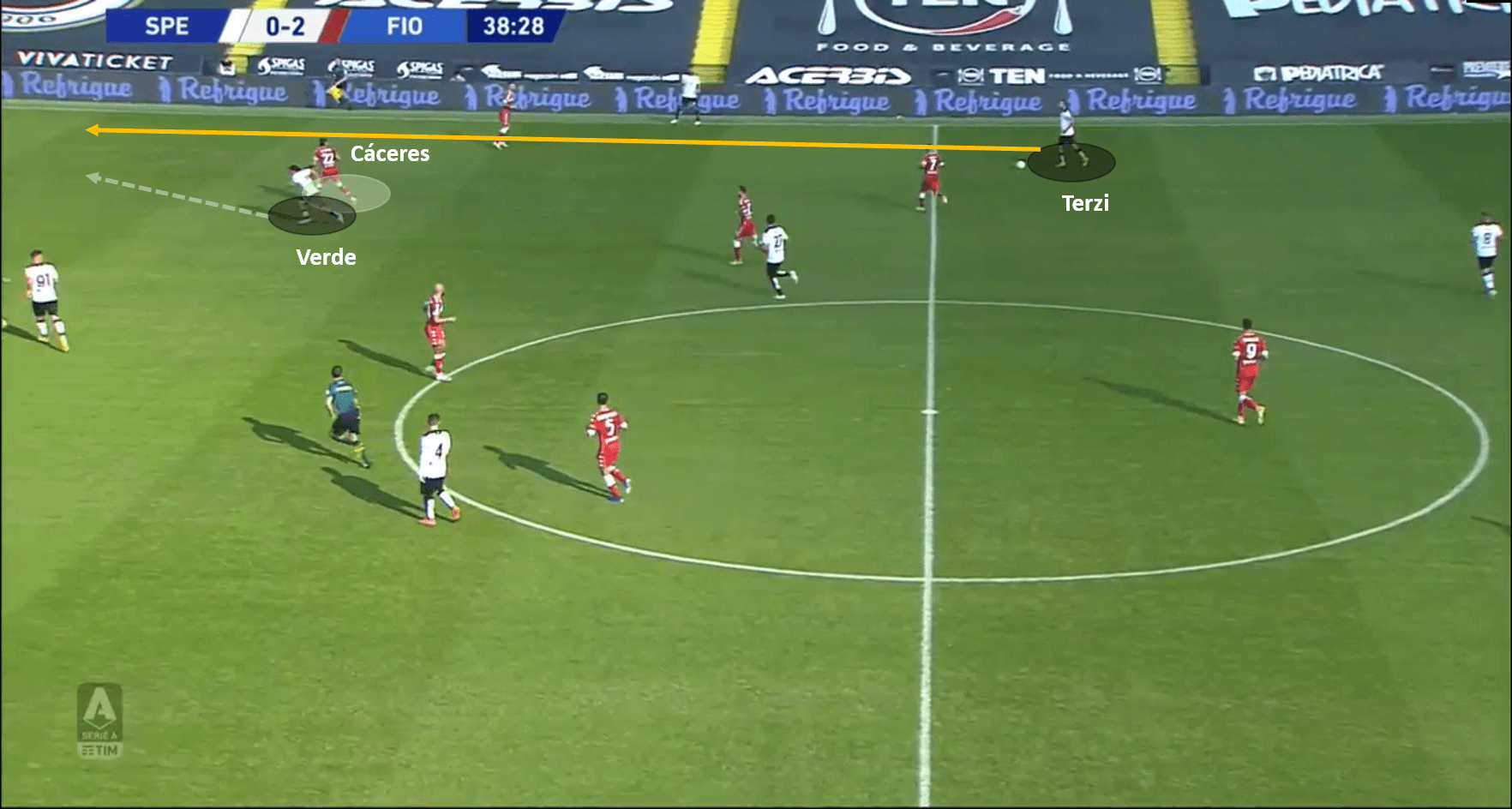
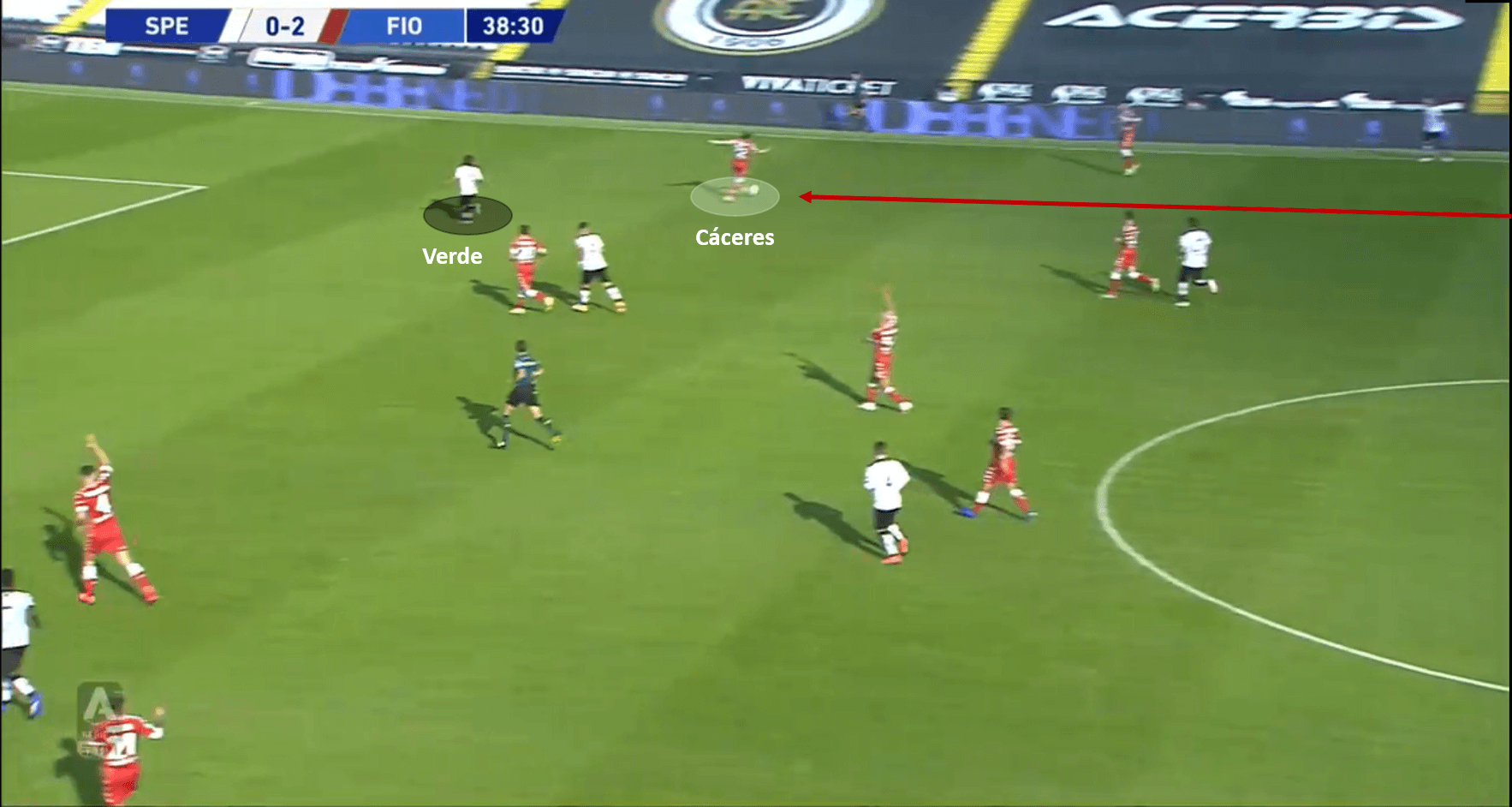
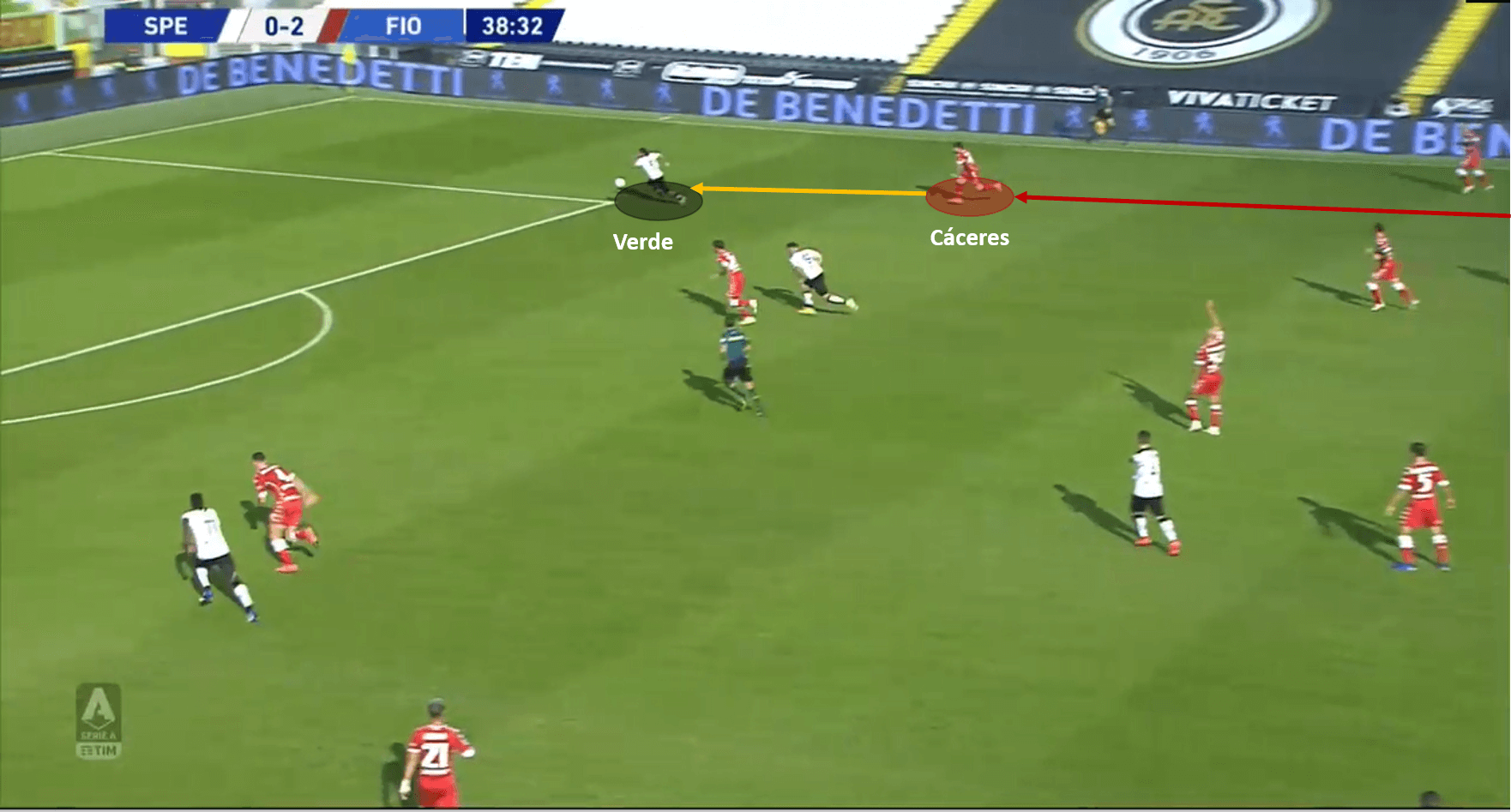
Conclusion
The tactical analysis covers some of the key events in the game, which led to the 2-2 result. Both teams were well matched for most part of the game, barring a few errors on either side which cost goals to both teams. The analysis also brought out how Fiorentina took advantage of their setup tactics, while Spezia took advantage of their high press and forced outcomes on the game. However, one would argue that Fiorentina should have won this game owing to the quality of their squad and the fact that they are experienced Serie A campaigners, as opposed to Spezia who have newly been promoted to the league.
Both teams would have been looking to win this game, after winning only one in their campaigns so far. However, the draw does little to better their wins record this season. For Fiorentina, they must wonder how they managed to throw away a 2-0 lead. For Spezia, this draw would be a result they would happily take given they were down two goals inside the first four minutes. It could be said that Spezia drew the game and won, while Fiorentina drew the game and lost.






Comments